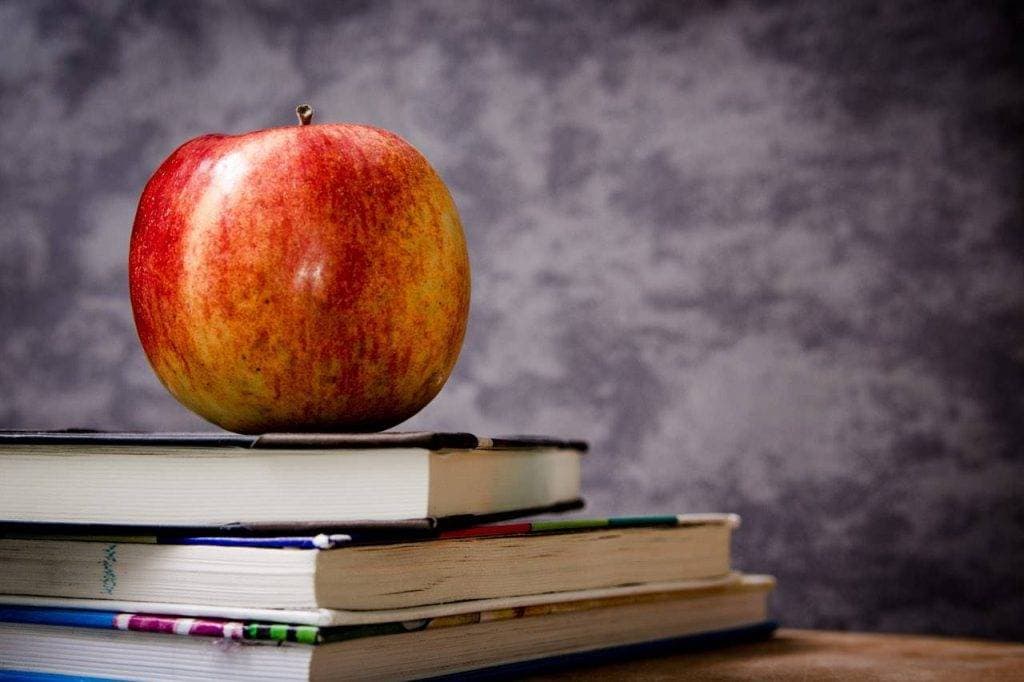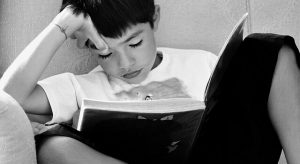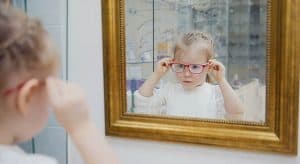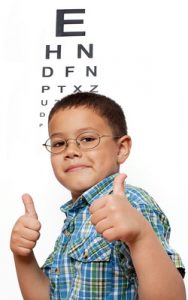Since up to 80 percent of everything a child learns is derived through the visual pathways, if there is any interference in those pathways, a child may not develop to their maximum potential.
There are 17 visual skills that are essential for learning. The following skills are essential for reading:
1. Visual acuity
There are many visual skills which are important for academic success. One of the least important skills is visual acuity (clarity, sharpness), which is typically represented by a fraction, such as 20/20, 20/400, etc.
The notation of 20/20 means that a person is capable of seeing clearly at a distance of twenty feet.
Unfortunately, how well a child sees at twenty feet away has little to do with how his vision functions at the reading and learning distance— approximately eleven to sixteen inches from the face.
In fact, the Snellen eye chart test which measures visual acuity actually may do more harm than good, as it give both parents and teachers a false sense of security that vision is ‘normal’. There are many other important visual skills that might not be developed even though visual acuity at distance is normal.
Schedule an eye exam with an eye doctor near you who can evaluate your visual acuity.
2. Eye tracking and teaming
One of the more important visual skills is the ability to coordinate the two eyes to work together.
A child is born with two eyes, but he must learn to use the eyes as a team (eye teaming). Some children learn to do this properly while others do not.
For example, some children develop a problem known as exophoria, which is a tendency for the eyes to deviate in an outward direction. This is not the same as a condition known as exotropia where the eye actually can be seen to be in an outward position (turning outward, eye turn, “wall eye”).
3. Convergence
During the act of reading, the demand is for the two eyes to turn inward so that they are aimed at the reading task, this inward eye movement is called convergence. If the eyes have a tendency to deviate outward, the child must use excess effort and energy to maintain fixation on the reading task, this is also known as Convergence Insufficiency.
Many published studies show that Convergence Insufficiency can negatively affect a child’s reading, attention and school performances.
When reading, the eyes do not move smoothly over a line of print, rather, they make a series of fixations looking from word to word.
Commonly, a child loses his place while reading and/or uses their finger or a marker to maintain his place. While making the eye movements during the act of reading, the child might not land on the next word, but rather land a few words further on.
Consequently, they commonly omit small words or confuses small words. Often, a child just adds a word or two to make the sentence make sense.
Double vision or overlapping vision (Figure 1) can result from Convergence Insufficiency:

Figure 1
4. Esophoria
Another eye coordination problem is termed esophoria, which is a tendency for the eyes to turn inwards.
The educational implication of this particular problem is that a child with esophoria sees things smaller than what they actually are. In order to see an object properly, it is necessary to make the object larger. The only means at the disposal of the child to make it larger is to bring it closer. Eventually, the child is observed with his head buried in a book and still not achieving.
Contact a vision therapy eye doctor who can help improve your child’s visual skills.
SEE RELATED: Can you Improve your Child’s Academic Performance?
5. Directionality
Directionality is another visual skill important for academic success, one test for this skill is illustrated in Figure 2.
Look at Figure 2, do you see a duck or a rabbit?
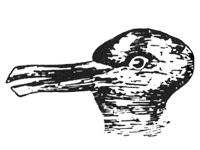
Figure 2
If the visual reflex is from left to right, a duck will be seen. However, if the visual reflex is from right to left, a rabbit will be seen. This is just one test out of a series to determine the directionality of the visual reflex.
It is just a convention of our culture that the English language proceeds in a left to right direction. Other languages proceed in a right to left direction and still others have a vertical orientation. If a child does not visually read English from left to right, vision therapy can teach them to develop this skill just like learning to team the eyes together.
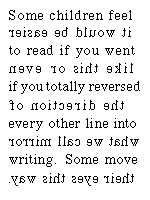
Figure 3
6. Span of perception
Some children only read a few letters or part of a word at any one time.
The span of perception is also related to success in school. Many children see just part of or one word at a time with each eye fixation, this could be compared to reading through a straw.
Reading speed can be improved by learning to see two, three, or more words with each eye fixation. This is illustrated in Figure 4. It is easy to see the difference in reading for meaning when the span of perception is wide.
Imagine trying to read like this:
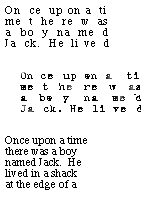
Figure 4
7. Visualization
This is similar to being able to see things in the mind’s eye.
There are authorities that state that the ability to visualize is very closely allied to the ability to think. In other words, thinking is related to the ability to abstract from specifics and the ability to visualize is deeply involved in this process. Visualization is also a trainable skill.
Nutrition and vision
Children often walk into the office eating a candy bar or sipping on a cola or other soft drink. When they are asked what they had for breakfast, the response usually falls in the frosted, sugary flake category or the answer is that they had no breakfast at all.
Which nutrients are important for optimum visual functioning? The same nutrients essential for the rest of the body are the ones needed for optimizing vision, as the eyes and vision does not operate independently of the rest of the body.
In all cases, a diet of high quality, nutrition-rich, unprocessed foods is important if we are going to be successful in vision therapy.
Vision therapy involves a learning process and, as with any learning process, learning will be maximized if the child has strong visual skills, a healthy body and a healthy mind.
LEARN MORE: Vision for School
Schedule an appointment with a vision therapy eye doctor to treat any visual skills that are affecting your child’s learning process.

